Art Paintings for Children to Write About Art to Write About
20 globe's art masterpieces that every child should know
Nosotros introduce the first result of our "art guide" for children: if you want your child to be savvy in the cultural field — nosotros think it best to start small. Children ofttimes see these images, and we suggest learning more than about the pop sources of "memes." The masterpieces are arranged in chronological order, and nosotros report one curious fact on each motion picture.
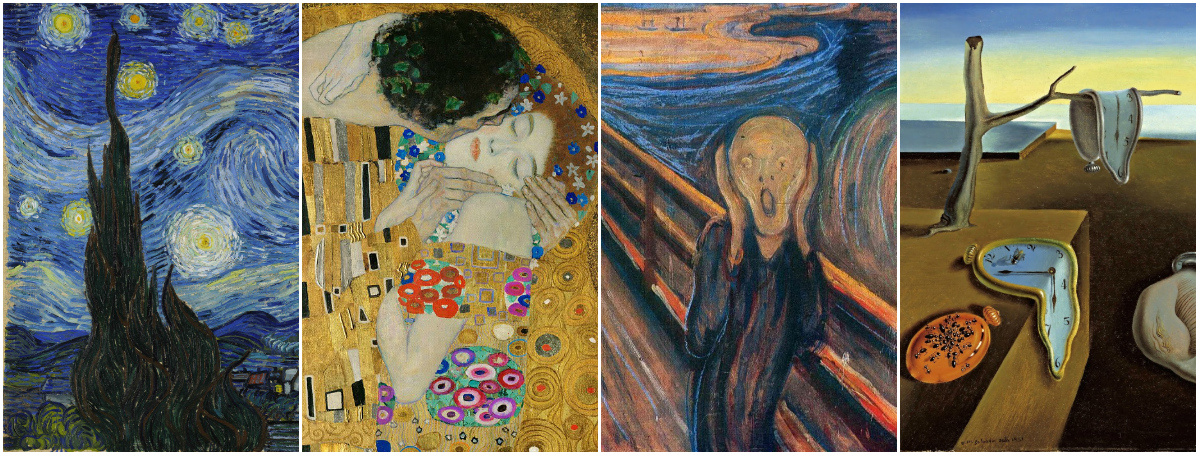
Please note: a "click" on an paradigm opens the moving-picture show in full size, and under the pic you will find a full description of each piece of work from this art selection.
1. Jan van Eyck, The Arnolfini Portrait (1434)
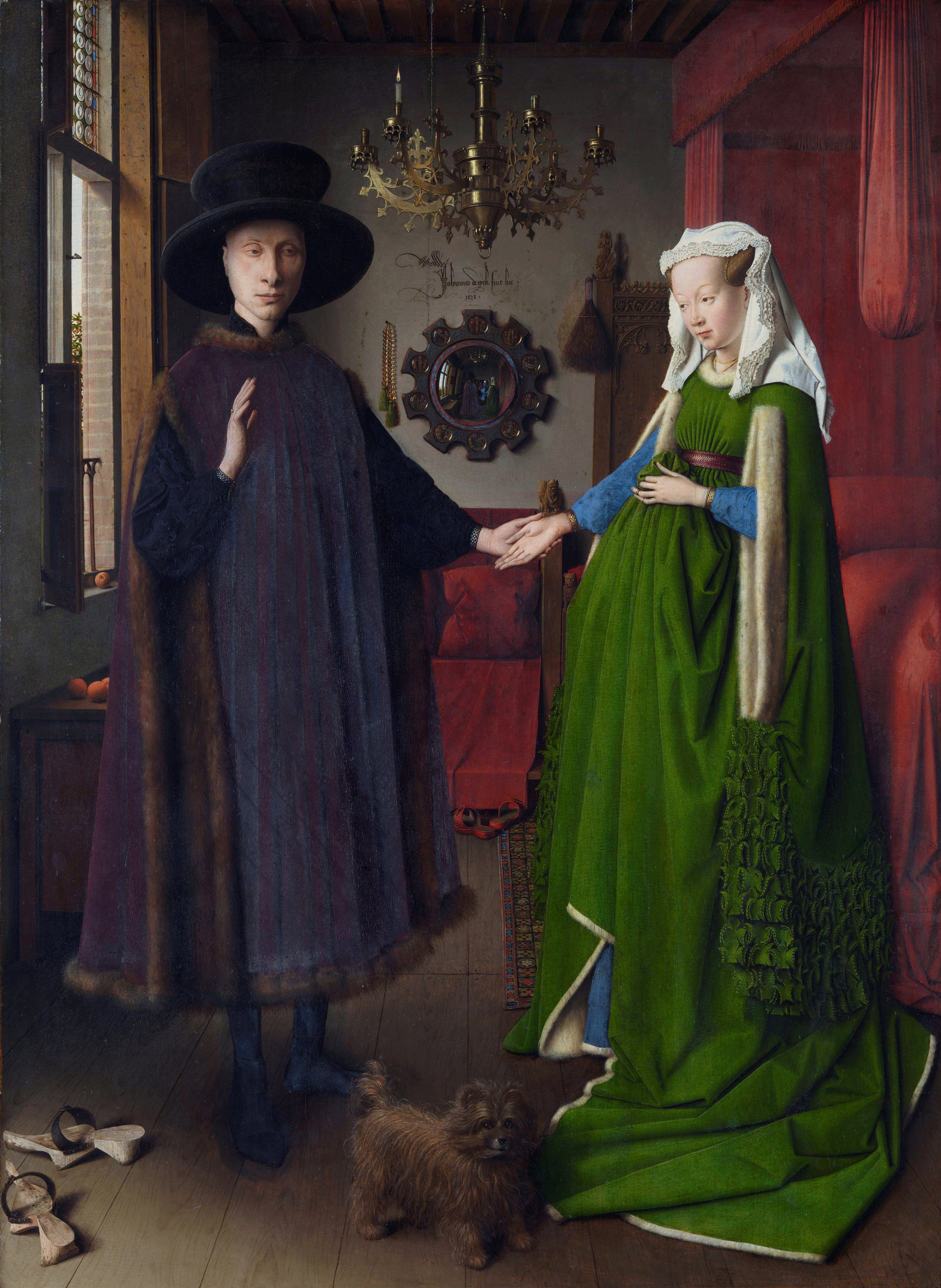
This is one of the most mysterious paintings in world painting. It is believed that the painting depicts the Italian merchant Giovanni di Nicolao Arnolfini and his wife in their residence in the city of Bruges. And this is where the mystery begins. Why are the feet of the spouses bare (their shoes are present on the sheet)? Why is a candle burning in a chandelier in a higher place the man, just in that location is no candle above the woman? Is it actually so that the artist makes it clear that by the time the painting has been completed, Arnolfini'southward wife passed away, and this painting was commissioned in retentiveness of her? And pay attention to the mirror. There, we can run across non only the reflection of the spouses. What kind of figures are these? Are they the wedding witnesses? It seems that one of them is the painter himself, judging by the elegant inscription on the canvas between the mirror and the chandelier:" Johannes van eyck fuit hic "or" Jan van Eyck was hither." These are not all the secrets of the famous canvas, and art critics are unlikely to come to a consensus on this work in the nearest futurity.

2. Sandro Botticelli, Birth of Venus (1482-1486)

Built-in of sea cream, the ancient goddess of love Venus arrives on the isle of Crete. Botticelli based his painting on a myth, and over time, his work became much mythologized. And then, in some historical documents, it appears that on Feb 7, 1497, the Dominican monk Girolamo Savonarola fabricated an endeavor to light a huge fire in Florence in club to destroy "trinkets" that did non assist strengthen the Christian faith. Allegedly, Sandro Botticelli was one of the participants of the ceremony (the contemporaries called the followers of the monk's ideas "crybabies"), and presumably he personally threw several of his canvases on mythological subjects into the burn down. But the flame of the bonfire spared "The Birth of Venus."
3. Leonardo da Vinci, The Last Supper (1495-1498)

The artist was commissioned a fresco in the cathedral, but Da Vinci, who adored experiments, chose to get the other way. He chose non to paint on wet plaster, equally the technique of creating frescoes required, and invented his own method by roofing a rock wall with a layer of resin, gypsum, and mastic. Alas, the experiment was a failure. Every bit a result, the religious bailiwick of Christ's communion with the disciples on the eve of the crucifixion eventually became a existent disaster for restorers. Today, the work of Leonardo da Vinci contains about twenty percent of the original.
iv. Michelangelo Buonarotti, The Cosmos of Adam (1511-1512)
The action in this fresco froze a second before the beginning of the biblical story when God gave life to Adam, the start man. The Bible says that God "breathed in his face the breath of life, and man became a living soul" (Genesis 2:7). But the researchers claim that Michelangelo had his own vision: in this fresco painting we tin see the cosmos not simply of human, but of human sapiens ("intelligent man"). After all, Adam is already conspicuously capable of breathing and moving, though he even so remains an incomplete creation. What is missing? A professor at Temple University in the The states, Marsha Hall, answers this question: "From the point of view of the Italian , endowing a person with the power to think meant being created in the image and likeness of God." Some researchers believe that here Michelangelo portrayed the Creator as literally a source of reason: in the form of a brain. Look at him accompanied past the surrounding objects — all together really looks like an anatomical image of the contents of our skull!
5. Raphael Sanzio, The Sistine Madonna (1513)
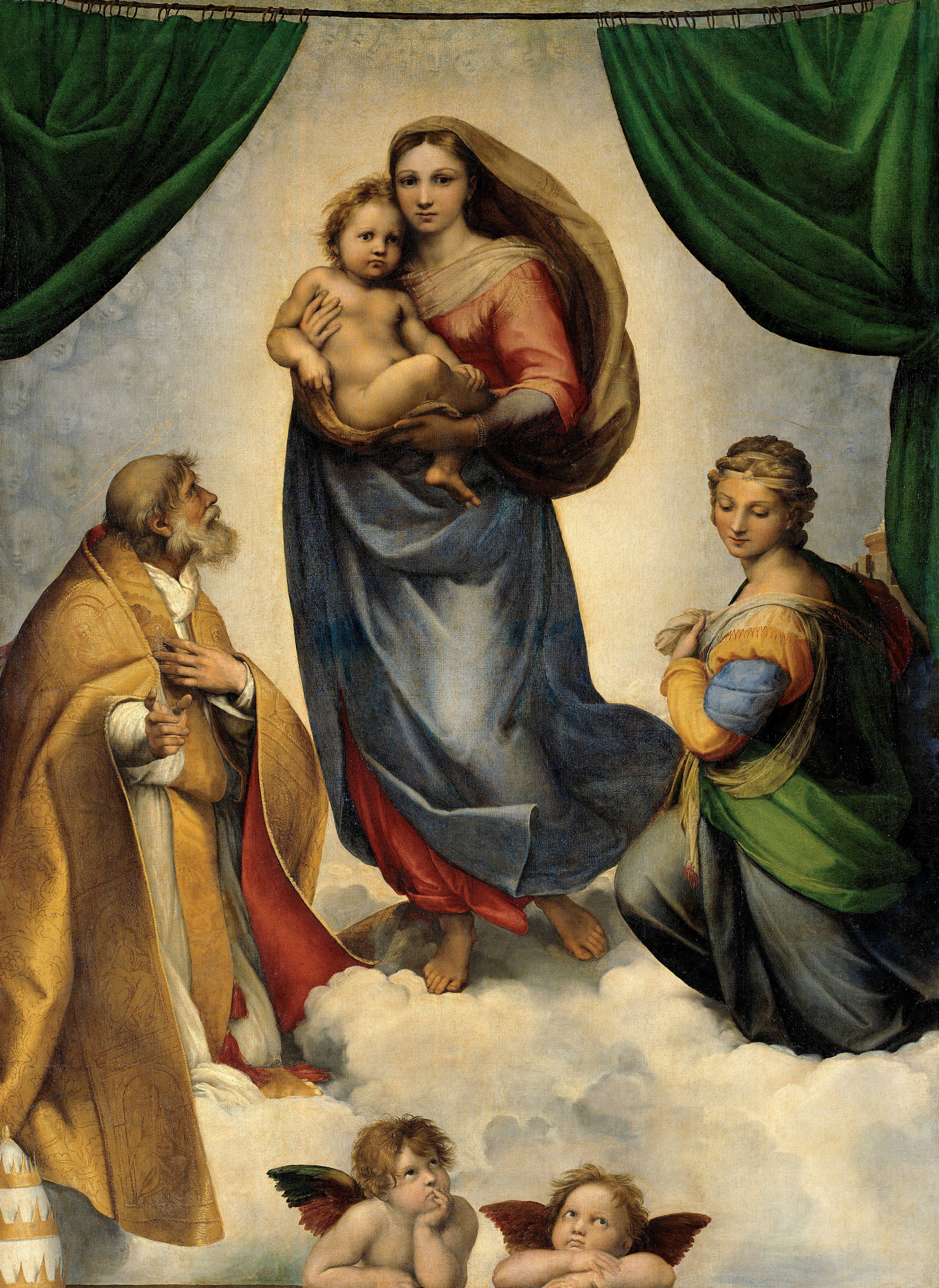
On this canvas, Raphael depicted the appearance of the Virgin Mary with the baby Christ in her arms to St. Sixtus. The painting was commissioned to the artist past Pope Julius II. The painter painted into the canvass many details that are of import for his own worldview. Raphael was a gnostic: the supporters of this religious movement believed that they possessed special cognition nearly God and the world order. In detail, they profoundly appreciated the number six. Researchers note the significance of this number for the picture. Its limerick consists of six figures, and the right hand of St. Sixtus seems to take six fingers (though, if you look closely, the "sixth finger" is, rather, the inner side of the palm).
6. Pieter Bruegel the Elder, The Hunters in the Snow (1565)
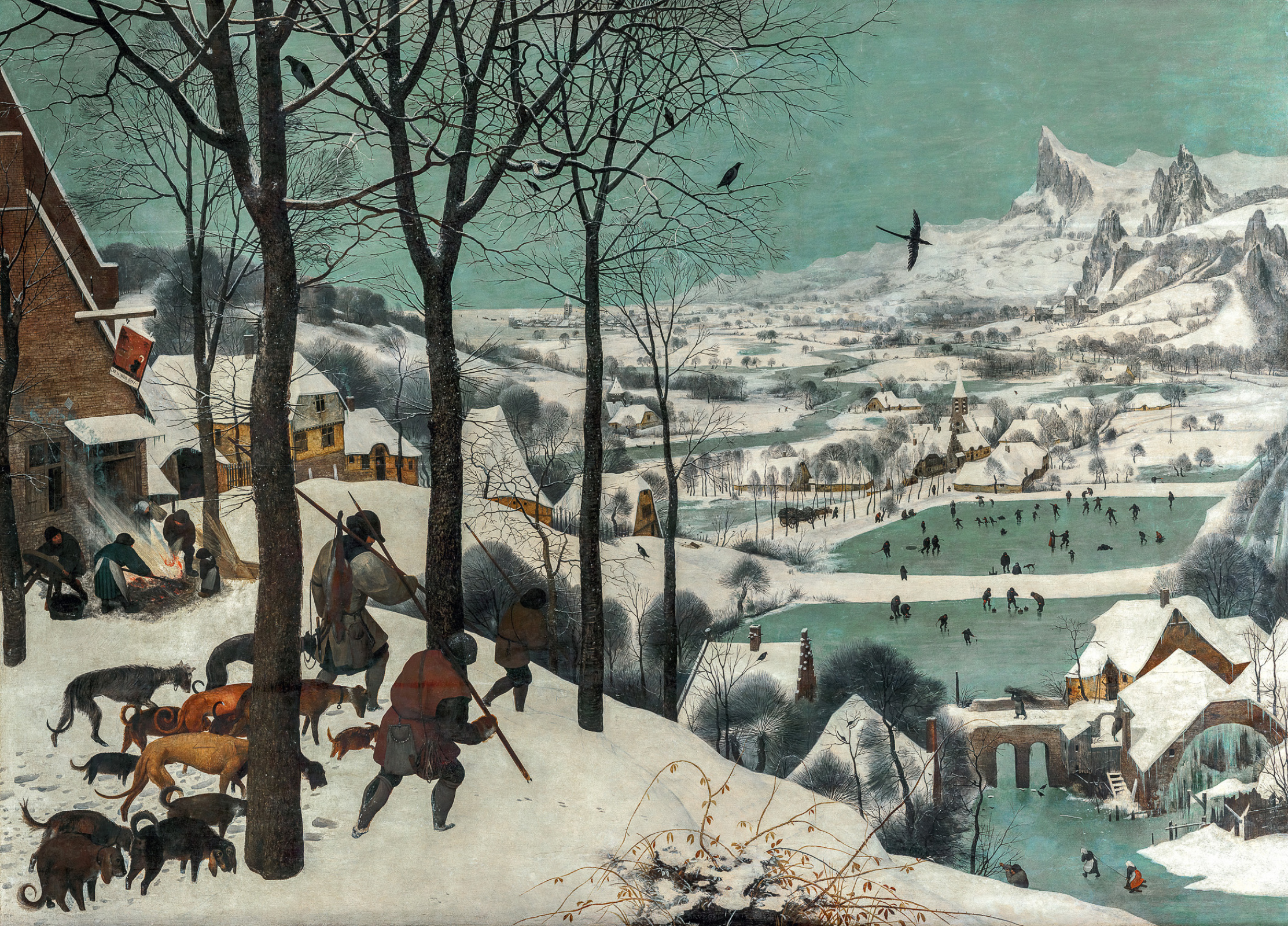
This surely magnificent painting has a fiscal story behind it. The then businessman Jongelinck, who revered Bruegel's art, commissioned Bruegel to create a serial of six seasonal paintings depicting the seasons ("Hunters in the Snow" was one of them). Bruegel had not completed the work when Jongelinck faced financial difficulties. To borrow money from the city treasury, the businessman put into pawn the unfinished paintings of the principal — more precisely, the document confirming the rights to those pictures. As a result, immediately after the completion, Brueghel's works concluded upwards in the treasury vault. The artist did non see them anymore.
seven. Rembrandt van Rijn, The Night Watch (1642)
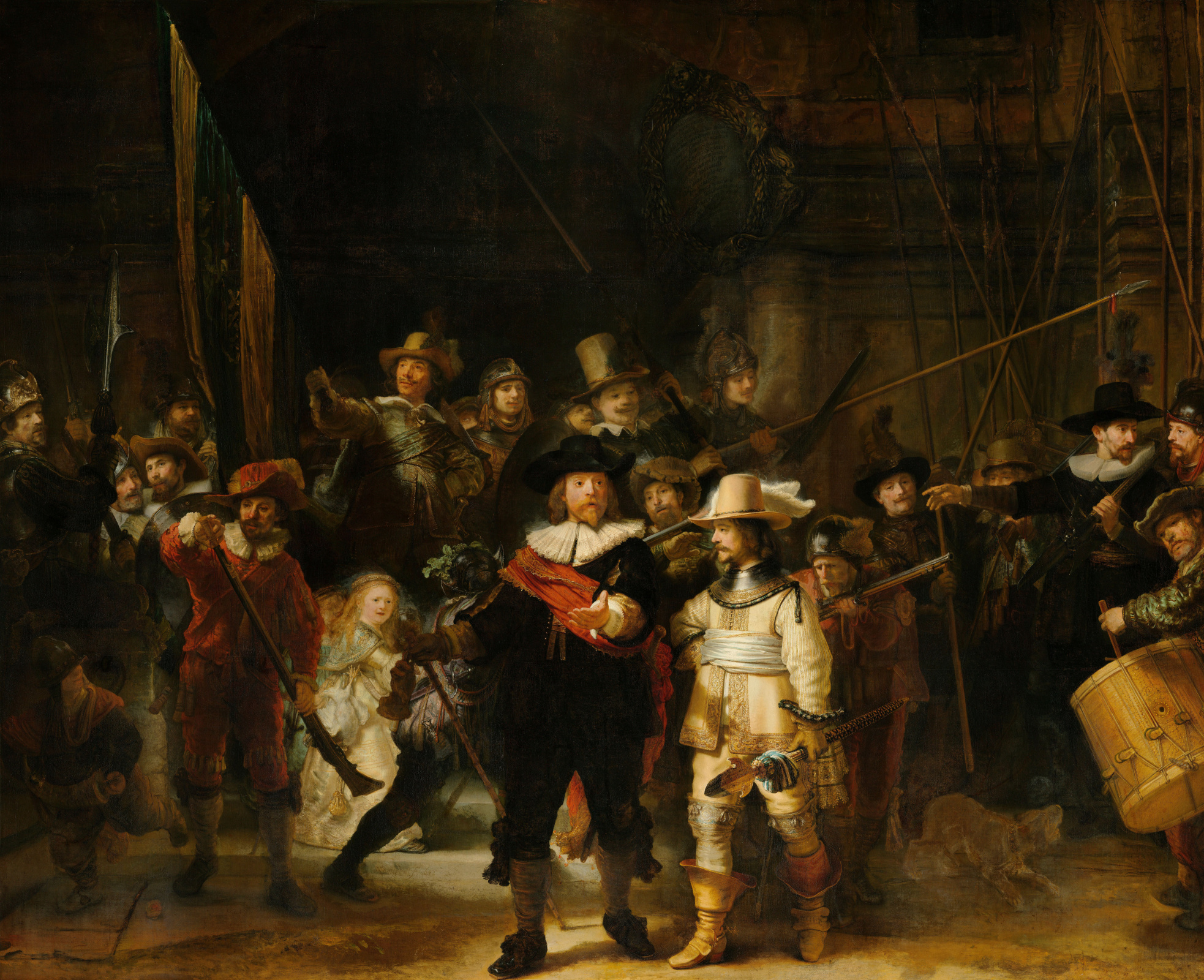
The full proper name of The Night Sentinel is The Shooting Visitor of Frans Banning Cocq and Willem van Ruytenburch. This is one of the about much-suffering artworks in the history of art. Firstly, the soot layer changed the initial color of the Night Sentry: the scene takes place during the twenty-four hours, then the work got its "dark" proper noun due to a misunderstanding. Secondly, the sail was cut horizontally and vertically. Thirdly, information technology suffered from inept restorations, and in 1990, a mentally ill visitor to the Rijksmuseum splashed acrid on the painting. At the same time, Night Watch remains a masterpiece and even the object of pilgrimage.
8. Diego Velazquez, Las Meninas
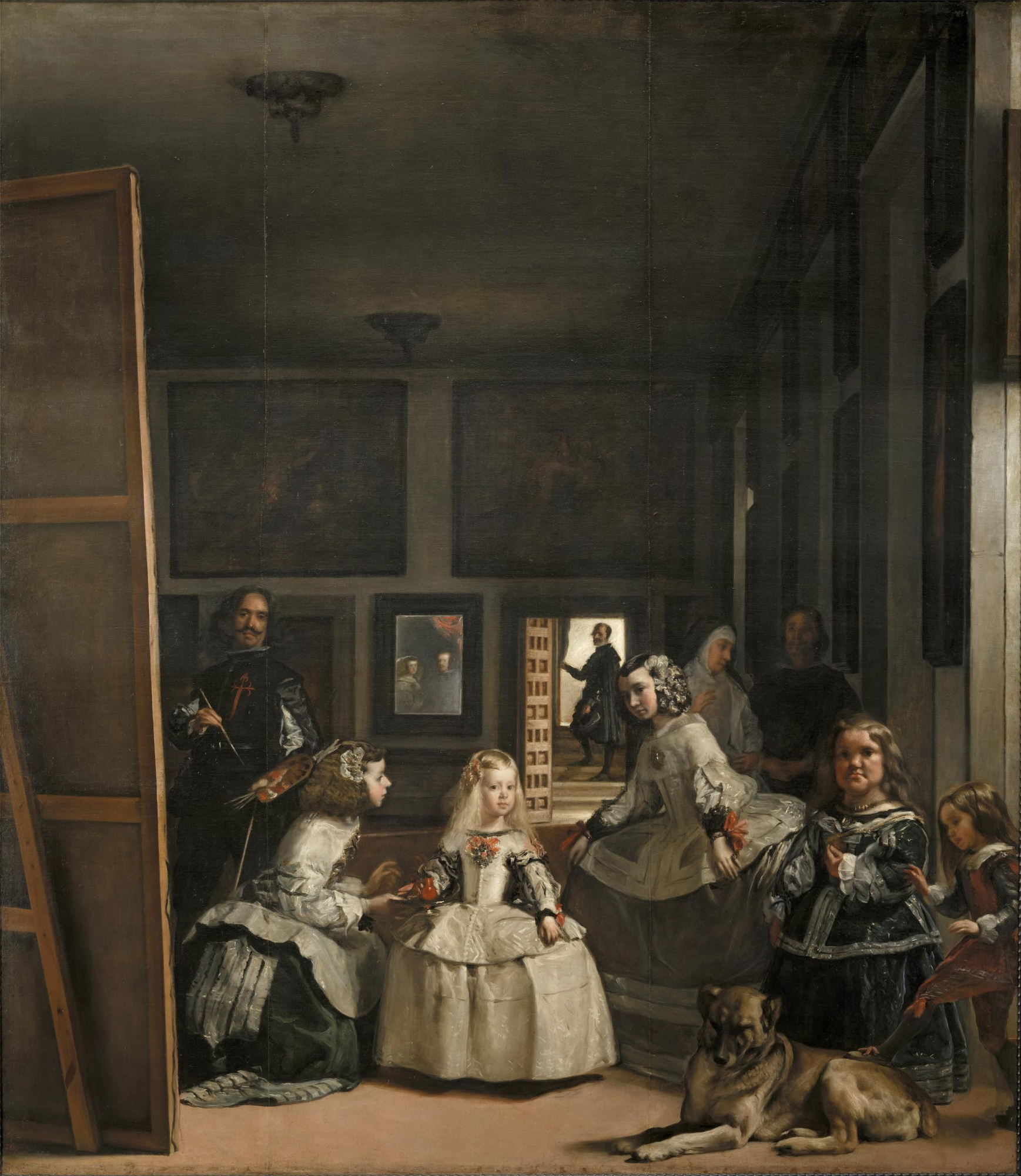
"The Ladies-in-waiting" - this is how the name of Velazquez's painting is translated from Spanish. On the sail, which captured the moment of drawing the portrait of the royal couple (y'all tin can see the royal spouses in the mirror in the groundwork) and the daily life of the Infanta Margaret and her lady-in-waiting, Velazquez pictured himself with a palette in his easily. On his chest is the red cantankerous of the Order of Santiago, the highest country award of Spain of those times. The artist received the order at the very end of his life. Philip ordered this to exist added after Velázquez's death, so another painter drew the honor on Velazquez'south chest in "Las Meninas."
9. Jan Vermeer, Girl with a Pearl Earring (1665)
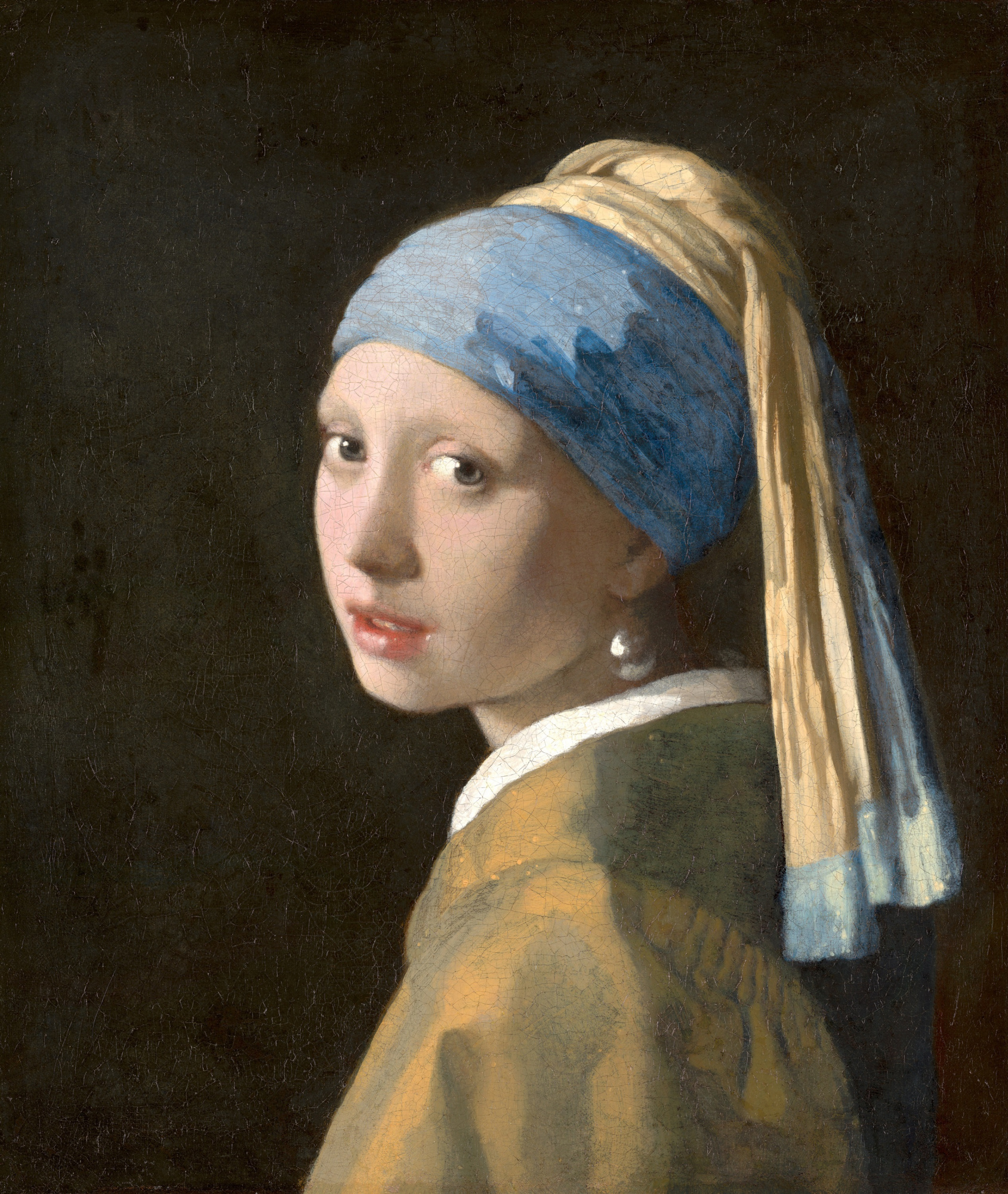
The Dutch painter Jan Vermeer did not requite names to his paintings. This painting got its proper name, "Daughter with a pearl earring," much later, and this immediately gave way to the debate whether the jewelry can be considered a pearl. Most researchers are inclined to believe that the model was wearing an earring made of Venetian drinking glass, and the portrait itself was probable a figment of the creative person's imagination.
ten. Karl Bryullov, The Last Day of Pompeii (1830s)

It took only 11 month for Bryullov to paint The Last Day of Pompeii, just it took him as long every bit 6 years to get prepared for the work. At the same time majestic and terrifying canvas that tells us about the death of the urban center of Pompeii from the eruption of mount Vesuvius also features the artist's cocky-portrait. Bryullov depicted himself in the left part of the painting, under a box of brushes and paints.
eleven. Katsushika Hokusai, The Great Wave off Kanagawa (1832)
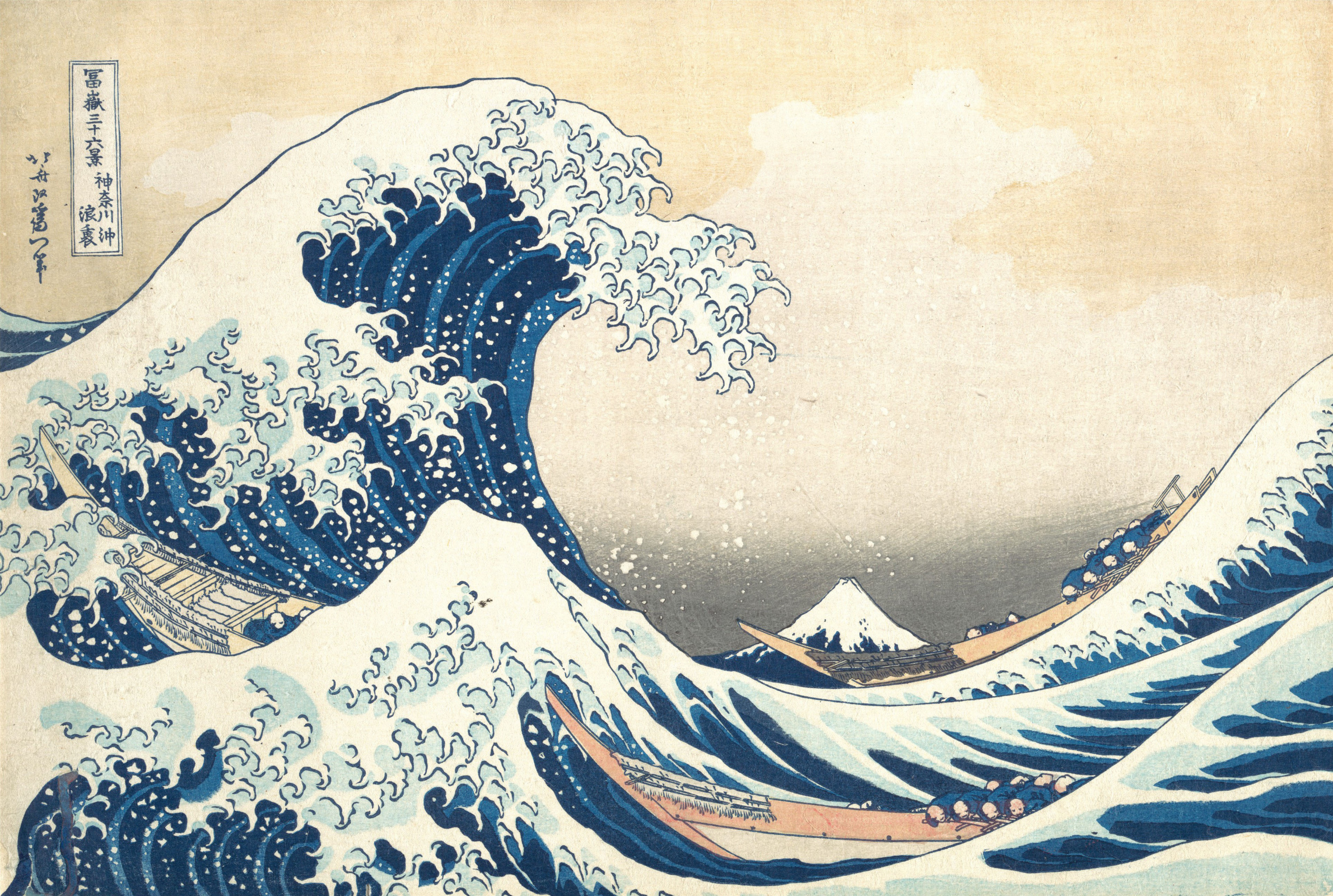
This woodblock print past the Japanese artist Katsushika Hokusai was the first print in the creative person's Thirty-half dozen Views of Mount Fuji series. The image depicts an enormous wave threatening three line-fishing boats off the coast of the boondocks of Kanagawa while Mount Fuji rises in the background. It is Hokusai's most famous piece of work and one of the almost recognizable works of Japanese fine art in the world.
12. James Whistler, Arrangement in Grey and Black No. 1. The Artist's Mother (1871)
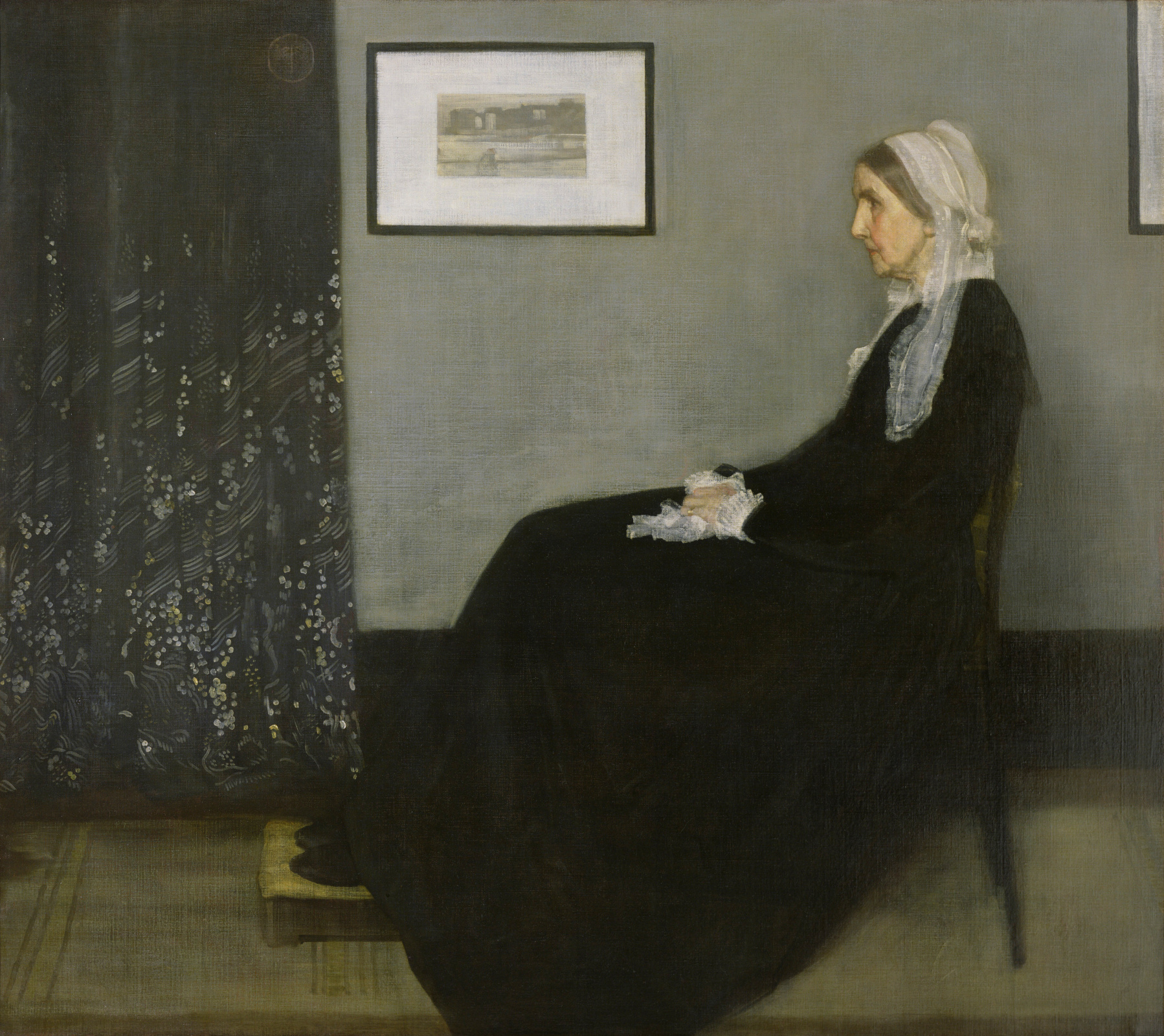
This is one of the most famous and recognizable portraits in the world. Meanwhile, critics in United kingdom of great britain and northern ireland, where the American Whistler moved to from his native Massachusetts, rather coldly accustomed the artist'southward new work. Though in France it was greeted with adulation later on. And in the Us in 1938, a bronze statue ii.5 meters high was installed in honor of Anna Whistler, the artist's female parent, who was depicted in the portrait.
13. Claude Monet, Impression. Sunrise (1872)

The compiler of a catalogue of paintings by Claude Monet complained that the artist gave his works the unvaried titles. Monet idea for a moment and named this painting saying 'Put Impression.' Later, this artwork gave its name to a brand new phenomenon in art history — the . However, at starting time the word "impressionist" was used to offend the painters. On April 25, 1874, the Parisian newspaper "Charivari" published an commodity, in which the fine art critic Louis Leroy scornfully called the young artists "Impressionists" wishing to emphasize that they could not describe.
14. Pierre-Auguste Renoir, Luncheon of the Canoeing Party (1881)

In this film, Renoir captured the terrace of The Maison Fournaise restaurant, which was a favorite coming together point for young artists and writers of the fourth dimension. "Luncheon of the Canoeing Party" is a portrait of Renoir'southward friends and acquaintances: the girl playing with the puppy is Aline Charigo, the future wife of the artist; Renoir's affluent patron and fellow painter Gustave Caillebotte in a straw hat smokes in the lower right corner, conversing with actress Angèle Legault and Italian journalist Adrien Maggiolo; actress and model Jeanne Samari adjusts her hat talking to the fine art critic Charles Ephrussi.
Today, The Maison Fournaise restaurant looks exactly the aforementioned every bit in those days, and its terrace is named in his accolade — the Renoir terrace.
fifteen. Vincent van Gogh, Starry Dark (1889)
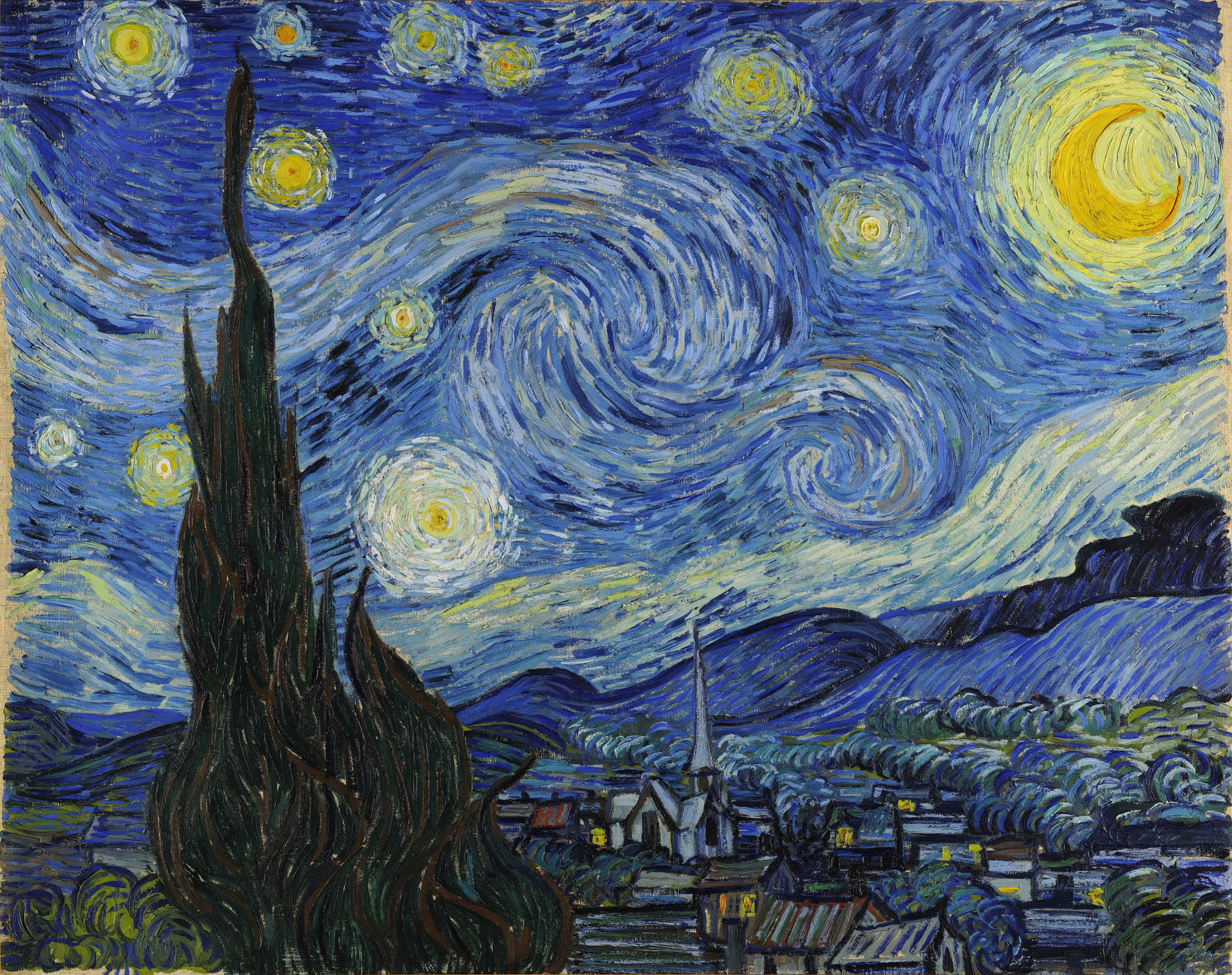
This is one of the nearly popular paintings in the world. Thick long brushstrokes are put advisedly side by side, which is typical for van Gogh's painting manner. Juicy blueish and yellow brand this painting especially eye-pleasing.
Withal, the creative person himself considered this work unsuccessful. When the painting got to the exhibition, he casually said virtually it: "Possibly it volition show others how to portray night effects better than I did."
16. Edvard Munch, The Scream (1893)

There are several versions of this moving picture: Edvard Munch used this discipline at least four times. That is why, the famous "Scream" is now exhibited non but in two museums in Oslo. On May 2, 2012, the creative person's pastel copy of the "Scream" was sold for USD 119, 922, 500 to a private collector, the American businessman Leon David.
17. Gustav Klimt, The Kiss (1907-1908)
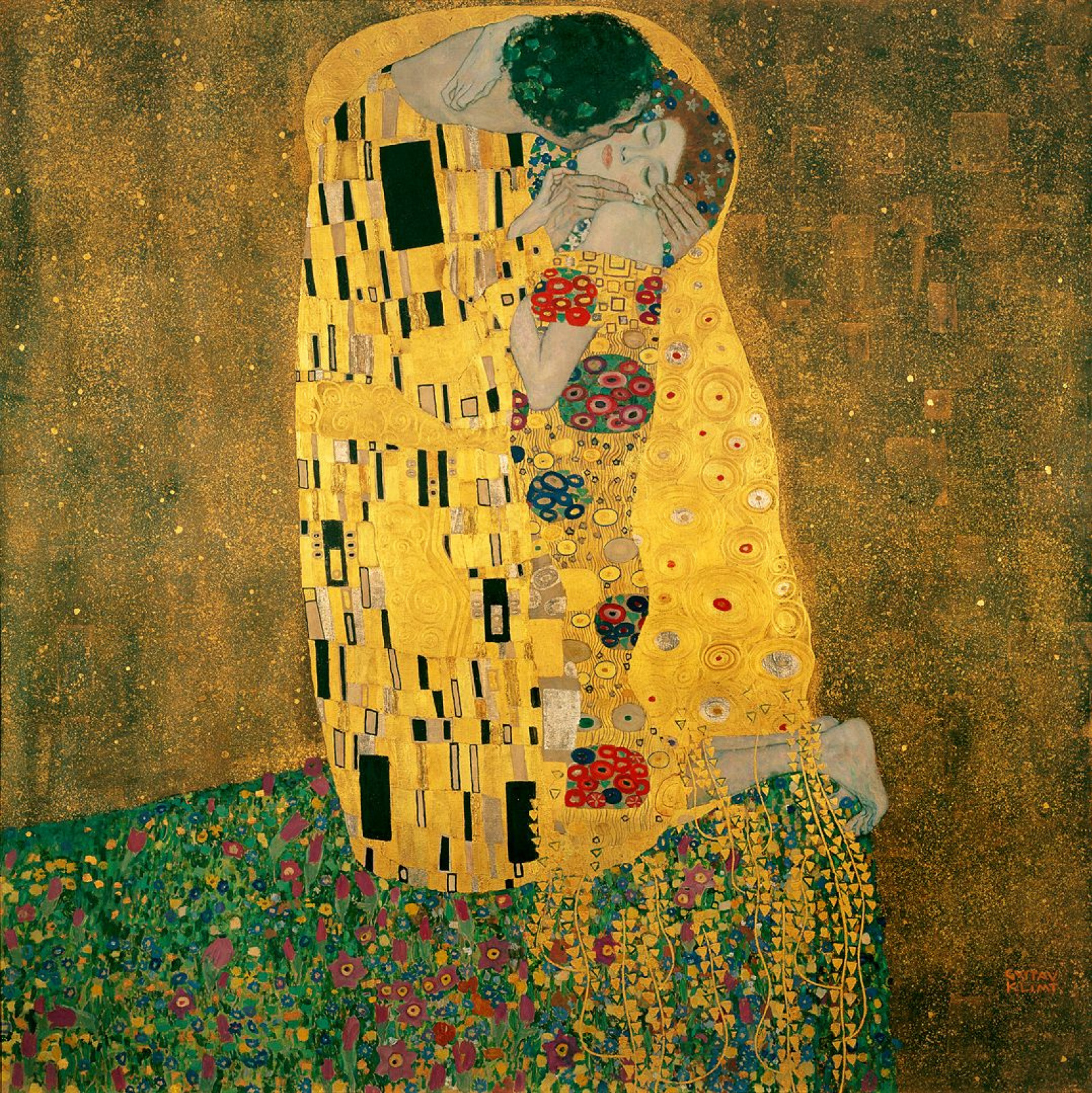
Some art critics insist that in this painting the Austrian artist depicted himself and his dearest Emilia Floge, with whom Klimt had a complicated human relationship. Though there are other opinions and other stories. According to one of them, the painting was commissioned by a count. He gave the creative person a medallion with the image of his love and asked him to describe them together. While working on the painting, Klimt unexpectedly fell in honey with the girl from the medallion. That is why instead of the portraying the count the creative person depicted himself hiding his face up next to the girl.
18. Kazimir Malevich, Black Square (1915)
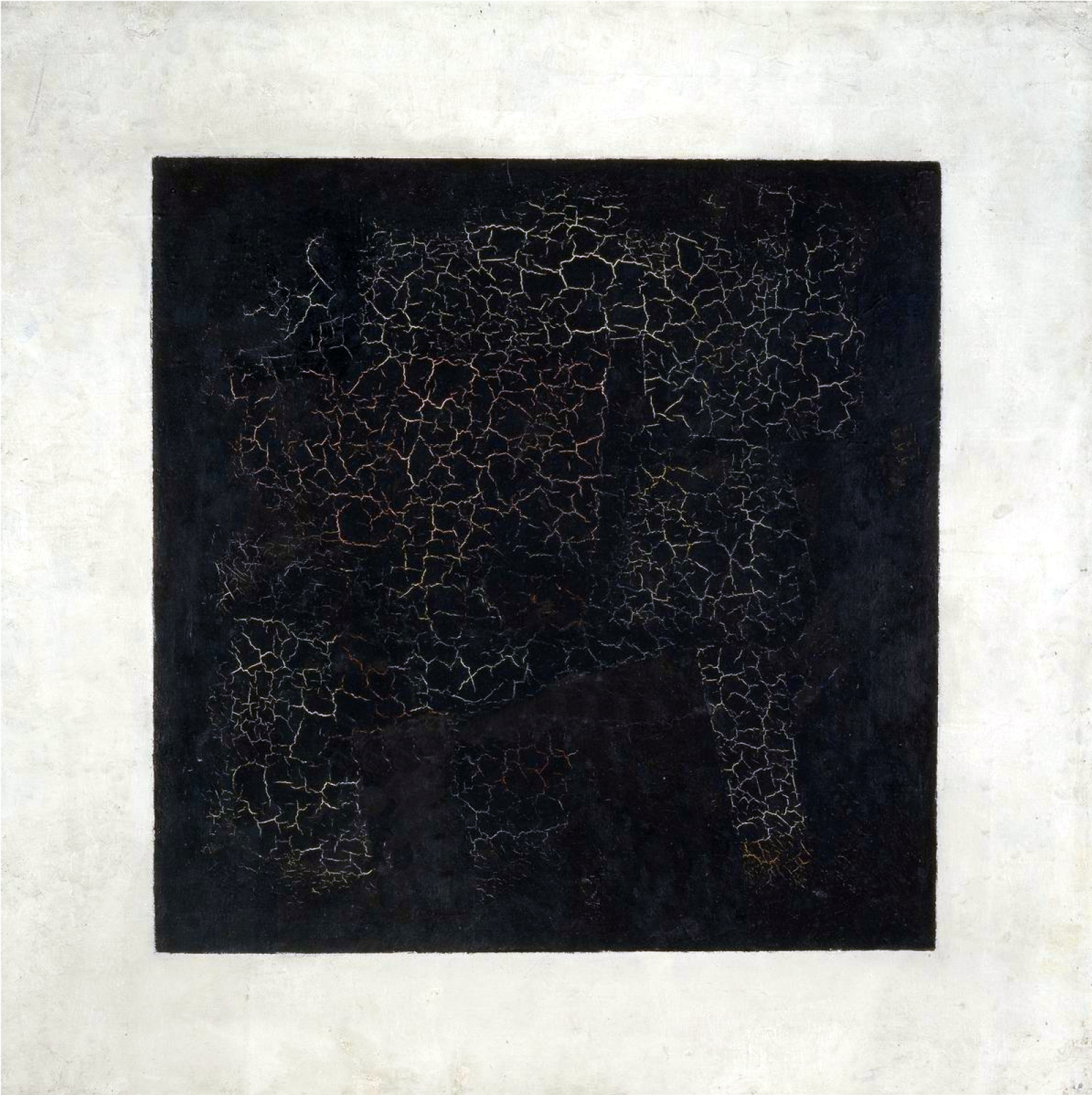
This is one of the most scandalous works in the course of art history. Some people even believe that the history of fine arts in the traditional sense ended as soon as the Black Square turned up.
Co-ordinate to Malevich, he had a very special experience when he was creating his Black Square dorsum in 1915. The creative person recorded his impressions: "Millions of stripes raced before my eyes. I could not see because of some blackness vision. The eye went out in new flashes."
Anyway, The Black Square is considered by many to be the starting indicate for the emergence of New art.
19. Salvador Dali, The Persistence of Retentivity(1931)
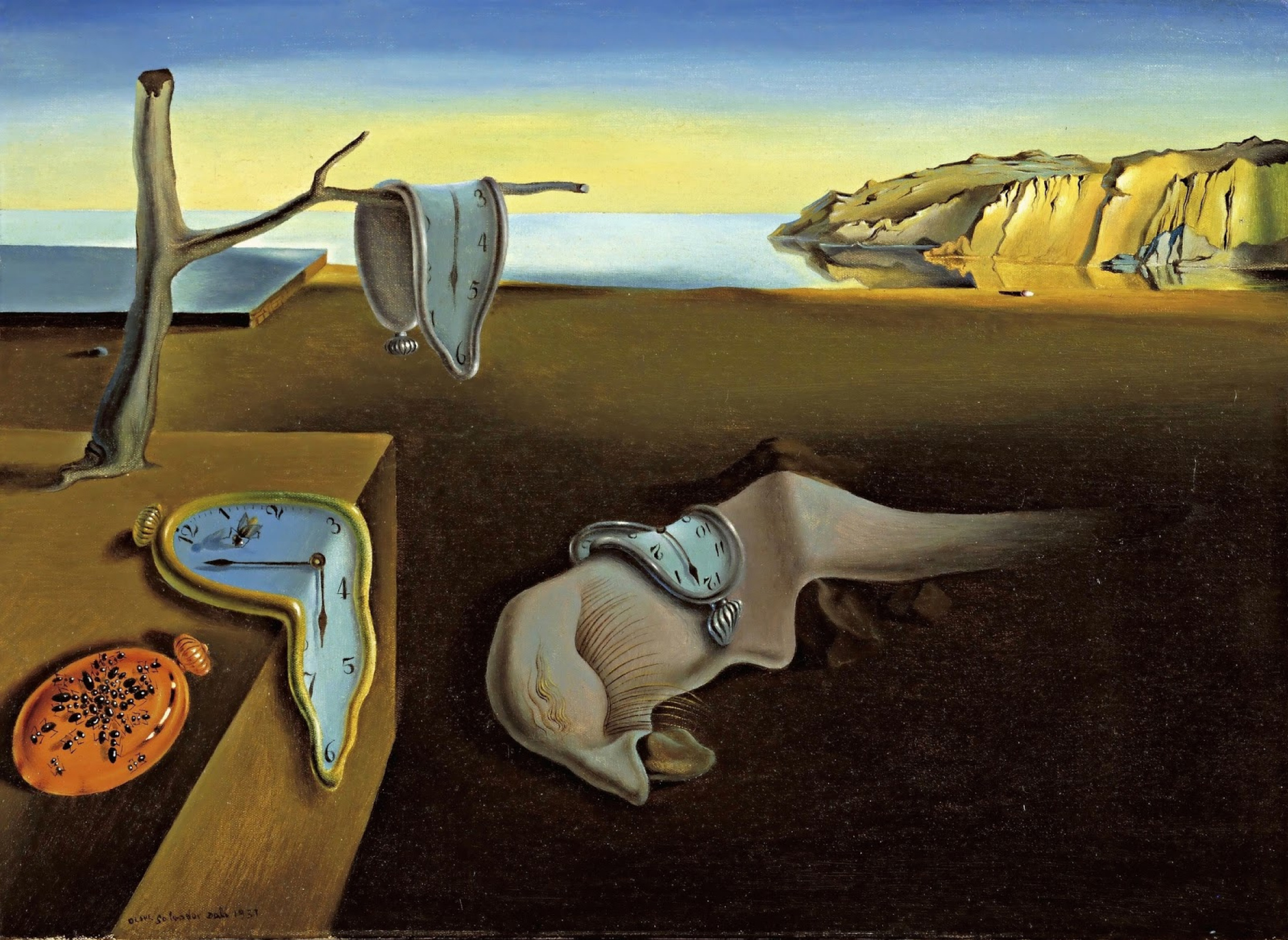
Salvador Dali described how he had been creating this painting: "I painted the clock face in ii hours. Gala (the artist's married woman) went to the movies with her friends. When I stayed lone, I was looking around the room. And I noticed the Camembert cheese that Gala and I had recently eaten. The cheese slowly melted in the sun."
Daly went to his studio, where the of Port-Lligat had already been captured on the canvas. The artist merely added the missing detail. The painting was ready by the time his wife returned. Did the artist eat the melted cheese? Nosotros no nada most this.
20. Pablo Picasso, Guernica (1937)

This motion-picture show is about the horrors of war. Pablo Picasso, who always claimed to be apolitical, could not help but respond to the bombing of Guernica in 1937. The Nazi'southward two-hour attack took hundreds of lives. Mostly women and children were killed. Despite the horror that the picture inspires with its grayness-brown palette, still there is promise in information technology. Its symbol is a lighted lamp under a shade. Picasso once said that "the lite in the picture is the earth to which every living existence volition forever strive."
…Of course, it is impossible to include all worthy masterpieces in this superlative xx. Therefore, another "art guide" for children volition follow and then that parents have everything at hand to innovate the child to the globe of beautiful and amazing art. To exist connected!
Source: https://arthive.com/publications/4135~20_worlds_art_masterpieces_that_every_child_should_know
0 Response to "Art Paintings for Children to Write About Art to Write About"
Post a Comment